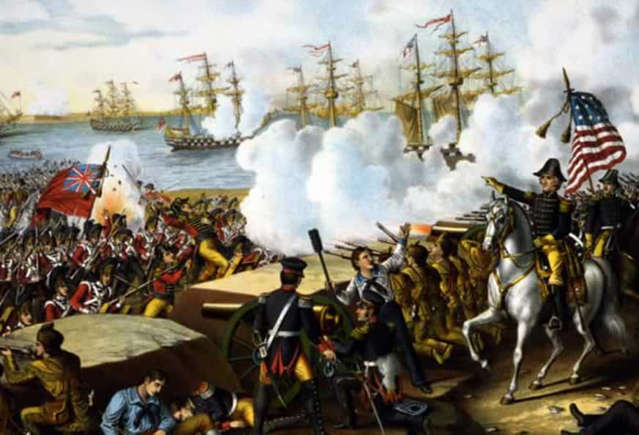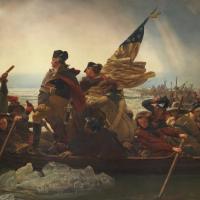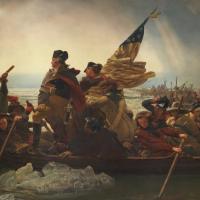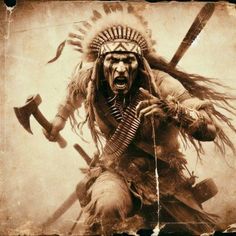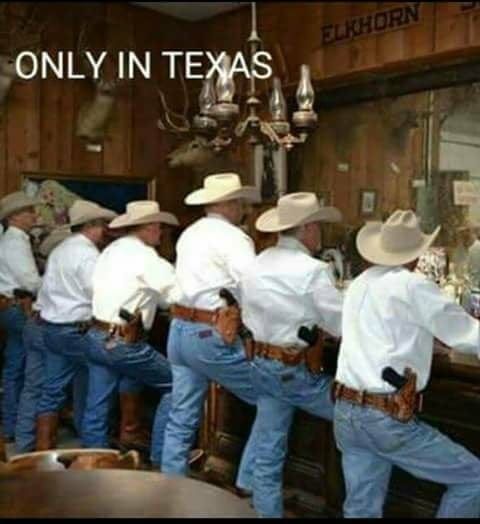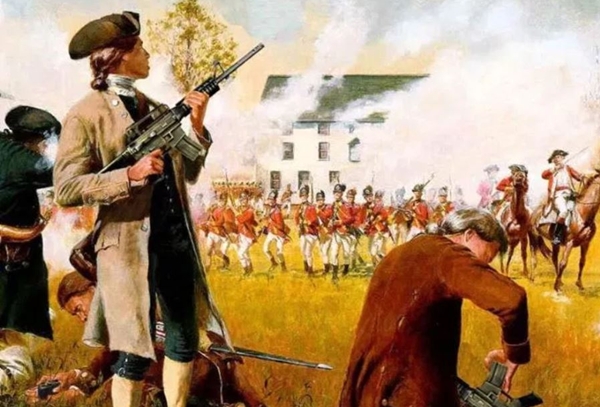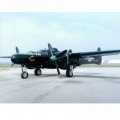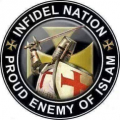
oldmarinesgt5
Welcome to Giblb573. Hope you enjoy.
- Share link
- Report

Like

Love

HaHa

Yay

Wow

Hate

Be the first person to like this.

Like

Love

HaHa

Yay

Wow

Hate
Be the first person like this
The Late Massacre near Fort Hall
Brigham City, Sept 12, 1859
Editor Deseret News--SIR:-
This morning Milton J. Harrington, wife and child, of Buchanan Co., Iowa, arrived here, survivors of the comp... View MoreThe Late Massacre near Fort Hall
Brigham City, Sept 12, 1859
Editor Deseret News--SIR:-
This morning Milton J. Harrington, wife and child, of Buchanan Co., Iowa, arrived here, survivors of the company of emigrants lately massacred by the Indians about the 2nd inst., 25 miles west of Fort Hall between Portneuf Bridge and the Snake River.
Mr. Harrington makes the following statement in relation to the murderous affair: “Our company numbered 19 persons, 6 men, 3 women, and 10 children between 1 and 10 years old. Some of the company was from Michigan, and the others from Buchanan County, Iowa. At the last crossing of the Sweet Water, we were advised to travel on Lander’s Cuttoff,
being told that that route was nearer, better fed, and safe from Indian depredations.
Our journey was prosperous until the night of the 2nd, when we were selecting our place for camping and were making our campfires. We were startled at the report of a gun, followed immediately by a number of others. We soon ascertained that our rear wagons, which had not yet arrived in camp, were attacked by the Indians. A boy about 10 years old came running to us and said the Indians had killed his father and were killing all the rest. In a moments time we were surrounded by the savages, whose hideous yells and constant cracking of their rifles at this moment rendered the scene too horrid for description. Those of us who survived made our escape by taking refuge in some rushes and willows on the bank of the Portneuf where we remained during the night. The next day we started on our journey on foot, and after traveling three days on scant rations, we came to Lieut. Livingston’s company of dragoons, who were escorting a party to Fort Walla Walla, Oregon.
After informing the command of our distress, Livingston sent a detachment of nine men with one of our company to pilot them to the place of the massacre. Upon their arrival, they found the dead bodies of 5 persons on the ground out of the 8 that were missing. The dead were horribly mangled and scalped. One little girl, five years old, had both her legs cut off at the knees. Her ears were also cut off, and her eyes were dug out from their sockets, and, to all appearances, the girl, after having her legs cut off, had been compelled to walk on the stumps for the sole purpose of gratifying the hellish propensity of savage barbarity.
Their animals were taken and their wagons plundered according to the usual mode of Indian spoliation.
The names of the MURDERED are:
Edward Miltimore, James Miltimore Jr., Wm Miltimore, Mary Ellen Miltimore, and Myron Cline.
MISSING:
Mrs Miltimore and child three months old and Albert Miltimore.
ESCAPED:
Milton J Harrington, wife and child, A. Hill, wife and child, Geo. Alonzo, Neilson Miltimore, Frank Hubbard, Nathan Titus, and Wm. Marsh."
Respectfully, J. C. WRIGHT
The Texas Hoodoo War
The 1875 blood feud, also known as the Hoodoo War and featuring the likes of former Texas Ranger Scott Cooley and up-and-coming legend John Ringo, pitted German settlers again... View MoreThe Texas Hoodoo War
The 1875 blood feud, also known as the Hoodoo War and featuring the likes of former Texas Ranger Scott Cooley and up-and-coming legend John Ringo, pitted German settlers against American-born cowboys.
By Allen G. Hatley
Edited by oldmarinesgt5
Cattle theft and the harsh way in which the alleged rustlers were dealt with may have triggered the Mason County War, but this vicious Texas feud became more of an ethnic conflict than a range war. The so-called German invasion of Texas began in the 1840s because of hardships in the home country and the promotion of immigration by the likes of the Adelsverein Society. After a brief flirtation with living on the Gulf Coast, the Germans drawn to Texas by promises of free land made the Hill Country -- first at New Braunfels and then at Fredericksburg -- the prime region for settlement. In 1848, developer John O. Meusebach brought the first German settlers to the area north of Fredericksburg. With the July 1851 establishment of Fort Mason (between the San Saba and Llano rivers on Post Oak Hill, near Comanche and Centennial creeks), more German-born settlers moved into what just seven years later would become Mason County. Anglo-American settlers were also stampeding to the Hill Country, and from the beginning, there was little friendly contact between the two ethnic groups.
The German and Anglo Texans spoke different languages, went to different churches and had different beliefs and habits. That caused some friction, as did the fact that the German immigrants owned much of the best land. Still, the two groups found a good reason to cooperate -- their population was small and the threat of hostile Indians was large. As late as February 1860, Thomas Milligan, the first sheriff of Mason County, was attending to some horses and mules on the outskirts of the town of Mason when Indian raiders killed him. The Civil War and secession, however, pushed the two groups farther apart. Texas voted overwhelmingly to secede, but in Mason County, the vote was 77 to 2 in favor of staying in the Union. Loyal Valley, 16 miles south of the town of Mason, got its name because the German settlers there did not desert the Union. Supporters of the Confederacy regarded the German farmers as a threat. Although no violence took place in Mason County at that time, Germans were attacked in other parts of Texas, and resentment built up everywhere.
After the war, Reconstruction was difficult for most Texans, but things were relatively quiet in Mason County, where the military force at Fort Mason maintained the peace. When the Army closed the fort in March 1869, peacekeeping became the business of local law enforcers and judges. In the minds of some Texans, too many former Union soldiers held those positions, but there was certainly no stress from population growth. The censuses of 1860 and 1870 both showed only 650 residents in Mason County.
Raising and selling Texas cattle became a very profitable enterprise in the late 1860s and flourished in the 1870s, with thousands of Longhorns being driven each year to the Kansas railhead towns. Cattle were Texas's most important "cash crop," and some Anglo cattlemen did more than just raise them -- they were not always too particular about what cattle they branded and brought to market. Because cattle often roamed far on the open range, honest cattlemen regularly rounded up their own cattle and strays, held them as their own, put out the word, and expected the owners to show up and identify their animals. Meanwhile, livestock rustling occurred all along the Texas frontier, including Mason County. The Germans generally had small, tame herds of cattle, and they objected to losing their "strays" to the rustlers and cowboys. In October 1873, the German majority in Mason County chose as sheriff a man they obviously felt could protect their interests. Little is known of Sheriff John Clark's background; even his middle name or initial is uncertain. How an apparent stranger could be elected sheriff -- for his name did not appear on any tax roll or census in Mason County before he was elected -- is unclear. When Clark rode out of town two years later, nobody is sure where he went. One thing is clear, though: While sheriff of Mason County, Clark had no problems with lynching or shooting those accused of -- or merely suspected of -- livestock theft. Clark was no gunman, but he surrounded himself with armed men, including Deputy Sheriff John Wohrle, who were willing to do his dirty work.
In August 1874, Clark and a large posse of German-born supporters arrested and jailed a number of reputable ranchers, led by M.B. Thomas and Allen G. Roberts, who were rounding up cattle. Thomas and Roberts owned ranching interests in Llano and Burnet counties, but they reportedly had hired several Mason County men who could recognize the cattle brands of local ranchers. The arrested men claimed they were rounding up only the cattle they owned, but to the state, it made little difference. State law allowed for a man to round up and sell any cow he found, as long as he later turned the money over to the rightful owner. After spending a week as prisoners in Mason and paying a large bond, these cattlemen were released and returned to Llano County, where they found their herds scattered. They brought charges against Clark for false imprisonment and robbery.
Clark, though, was only getting started. On February 13, 1875, he and his posse went into McCulloch County and arrested nine men, including brothers Elijah and Pete Baccus, for suspected cattle theft. The suspects were brought to Mason and jailed. Four of them made bond and left the community, while the other five remained in jail to await trial. Almost immediately, the sheriff made it well known around town that he was in favor of lynching cattle thieves.
Only a few days later, a 17-year-old cowboy named Allen Bolt was killed and left beside the road near Mason. A note pinned to his back said, "Here lies a noted cow thief." Bolt appears to have been the first man killed by vigilantes in Mason County, but far more blood was about to be spilled. On the night of February 18, a group of armed men broke into the house of Deputy Sheriff Wohrle, causing the lawman's wife to wake up half the town with her screams. The intruders forced Wohrle to give them the keys to the jail. The mob then went to the jail, where they took the five prisoners and headed south along the road to Fredericksburg. Only a quarter mile from the jail, the mob found a suitable tree and began to hang their prisoners.
There are several versions of how Sheriff Clark and Captain Dan Roberts of the Frontier Battalion (Texas Rangers), who was in town buying supplies, chased after the mob and tried to stop the lynchings. In one version, Clark found some other men to help him, and they drove off the vigilantes in time to save a few of the prisoners. Other accounts suggest that Clark and Roberts didn't do much of anything that night. In any case, nothing could be done for the Baccus brothers, both already hanged to death. Their associate, Abe Wiggins had been shot in the head and would die the next morning. A rope had not yet choked the life out of Tom Turley, and he was returned to jail. The fifth man, Charlie Johnson, had been able to throw the noose off his head and escape into the night.
The next morning, Wohrle and his wife said they could not identify any of the men who broke into their house, even though Mason was a small community where everyone knew each other. Clark and Roberts were of no help either, and nobody was arrested for the jailbreak or the murder of three prisoners. Still, four men, including young Bolt, were now dead in what would become known as the Mason County War, or the Hoodoo War. In his book Ten Texas Feuds, historian C.L. Sonnichsen wrote that Hoodoos "were the members of a vigilance committee which attempted, by ambushes and midnight hangings, to get rid of the thieves and outlaws who had been holding a carnival of lawlessness in Mason County, as in other parts of Texas." He added that some 19th-century blacks were using that term to refer to members of the lynch-happy Ku Klux Klan. One definition of "hoodoo" is "a person or thing that causes bad luck," and by that definition, there were plenty of hoodoos on both sides during the Mason County War.
Within a few days of the February 18 necktie party, a former member of Sheriff Clark's posse, Caleb Hall, was accused of rustling and placed in the Mason jail next to survivor Turley. Rumors soon spread that another raid on the jail was planned to finish off Turley and to give the same treatment to Hall. The two prisoners didn't hang around to see if the rumors were true -- they dug their way to freedom and high-tailed it from Mason County. Another former posse member, Tom Gamel, also felt threatened because he had spoken out against the hanging of the Baccus brothers. Instead of fleeing the county, Gamel brought together 30 armed men from surrounding ranches and rode into town to confront the sheriff. Clark beat a fast retreat out of town. Gamel and friends had the upper hand for a while, but on March 24, Clark returned with an estimated 60 well-armed Germans. Both sides drifted toward the courthouse square at the center of town, and a battle seemed imminent. Then, cooler heads prevailed, and the men negotiated a truce, which would stay in effect as long as mob rule was controlled and vigilantes didn't orchestrate their harsh brand of justice.
The truce held for almost two months. On May 13, Clark sent Wohrle out to Carl Lehmberg's ranch to speak with the foreman, Tim Williamson. The deputy asked the well-liked 33-year-old cowboy, who also owned his own small ranch, to accompany him to town. Months earlier Williamson had been arrested for possession of a stolen calf, and cattleman–brand inspector Daniel Hoerster had posted bond for him. It was the custom in rural Texas that a person accused of a minor crime, and who was not a flight risk, need not travel to town to post bond; that could be done by any reliable third party who agreed to put up the money within 24 hours. Apparently, Hoerster, a supporter of Sheriff Clark, had recently withdrawn his bond. Lehmberg told Wohrle he would post bond for Williamson later that day, but the deputy insisted that the new bond be paid in Mason. Lehmberg and Williamson agreed to accompany the deputy. While Lehmberg was saddling his horse, the deputy disarmed Williamson and traded his older horse for the foreman's younger, faster mount. The three men then rode toward Mason.
After covering about 10 miles, the trio ran into a dozen masked men. Lehmberg, Wohrle, and Williamson all supposedly tried to ride off, but Williamson had his horse shot out from under him (some accounts say by none other than Deputy Wohrle). On foot and disarmed, Williamson didn't have a chance. But apparently, he tried to talk his way out of the tight spot after recognizing one of the masked men as Peter Bader, a German farmer he had known for several years. Bader showed no mercy, firing his gun at Williamson, as did others in the mob.
Williamson was the fifth man killed in Mason County by Clark's mob. It was a huge mistake, for Williamson's death changed the nature of the Mason County War. Instead of a range war against alleged cattle thieves, it became an even more violent ethnic conflict, driven by the hate that Anglo-American cattlemen from Mason and nearby counties had for "the Dutch." Never mind all that beef and the quest for greater riches; the cattlemen were now out for vengeance. The first man to take direct and bloody revenge against Williamson's killers was a young former Texas Ranger named Scott Cooley, and he proved very good at such work.
Born in Missouri about 1854, William Scott Cooley moved with his family to Jack County, in northwest Texas, in 1856 or '57. Indian war parties regularly raided into that area, and it continued that way through the Civil War and even into the 1870s. The Austin Daily State Journal of February 17, 1872, and other sources tell the story of how three members of the Cooley family were trailing stolen horses the previous January 20 when they came upon about 25 Indians. The Cooleys opened fire, killing two Indians and scalping one, though they weren't able to recover the stock. Also in the early 1870s, Scott Cooley helped take two cattle herds to Kansas. During this time, Cooley met Tim Williamson and rode with him. Williamson and his wife, while living at their Loyal Valley ranch south of the town of Mason, apparently accepted Scott into their family, and the young man looked to Tim as a father figure.
On May 25, 1874, one month after the Frontier Battalion was formed, 19-year-old Cooley enlisted at Blanco City in Company D of that outfit. Not long after that, Cooley was with Major John B. Jones when Indians ambushed the command at Lost Valley, killing two Rangers and wounding two more. A month later, Cooley resigned his rank of corporal but remained with Company D. On November 20, according to the Austin Daily Statesman, he had a big role in another Indian fight: "Cooley, who was fired at and run into camp, not only cut a wounded Indian's throat, but stripped a large piece of skin from his back, saying that he would make a quirt out of it." Near the end of 1874, a reduction in state allocations for the Frontier Battalion led to a number of Rangers being discharged, including Cooley, who had served just over six months.
After leaving the Rangers, Cooley moved to Menard County, west of Mason County, to begin a ranching life. Five months later, in May 1875, the masked mob murdered Williamson, and Cooley declared that he would avenge "his best friend in the world." Cooley no doubt soon learned that Clark, as sheriff and tax assessor/collector, had once abused Williamson's wife during a confrontation over the tax assessment of Williamson's property in Loyal Valley. That incident, according to Tom Gamel, had caused Williamson to pay a call on the sheriff. "Clark was on horseback and Williamson followed him around on foot and tried to get a fight out of him, but Clark refused to fight," Gamel recalled. "Shortly afterwards, Williamson was charged with stealing a yearling and placed under arrest and given bond." Cooley didn't need more evidence than that to become convinced that Sheriff Clark, Deputy Wohrle, and their German mob were responsible for the death of his friend. He was further angered when the Mason County Grand Jury completed its inquiry into Williamson's death and filed no indictment.
On August 10, Cooley rode into Mason and inquired about John Wohrle. He then rode to the west edge of town, where the former deputy sheriff was helping two other men dig a water well. Cooley spoke briefly with Wohrle, who then turned his attention back to his work -- hauling one of the other men up from the bottom of the well. At that point, Cooley shot his target in the back of the head. The man being hauled up fell to the bottom of the well and was knocked out; the third man fled the scene. Cooley proceeded to shoot Wohrle five more times and to scalp him, the ultimate insult by an Indian fighter, before riding away. Nine days later, Cooley rode to the Bader farm in Llano County, perhaps looking for Peter Bader, the farmer who had shown Williamson no mercy. Cooley found Peter's brother Carl working in a field and promptly rode over him and shot him at the same time. John Wohrle and Carl Bader were the sixth and seventh men to die in the Mason County War, and their deaths got the attention of the German faction and Clark. The sheriff convinced Texas to offer a $300 reward for the arrest of Cooley.
Some writers have suggested that Cooley did not go to the Bader farm alone on August 19, but that he brought with him several drifters and desperadoes, including John Ringo, George Gladden, and Moses and John Baird. There is no evidence, however, that Ringo was even in Mason County at that time or that he knew Scott Cooley. Gladden, who lived in Loyal Valley and no doubt had known the late Williamson, could have allied himself with Cooley. Ringo, though, was from Burnet County and was never a friend of Williamson's. In Burnet, Ringo was a good friend of the Baird family.
On September 7, Moses Baird happened to be visiting Gladden when Mason County gambler Jim Cheney (also seen as Cheyney) showed up at Gladden's door. Cheney, who had been hired by Clark, told Gladden and Baird that the sheriff wanted to see them in Mason. As the two men were saddling their horses for the trip, Cheney rode off. If Gladden or Moses Baird had been involved in the killing of Carl Bader, they certainly would not have agreed to casually ride in to meet with the sheriff. In any case, it did not prove to be a wise decision. When they arrived near Hedwig's Hill, east of Mason, Clark appeared, and his mob, including Peter Bader, was close at hand. The sheriff's men were not there to talk; they opened fire, wounding the two riders, who stayed in the saddle and rode off. Their enemies gave chase. Moses Baird was found dead about a mile away, the eighth man murdered in the Mason County War, but Gladden managed to get away and receive care from friends in Loyal Valley. He survived to fight another day.
If killing Tim Williamson had been the biggest mistake made by Clark and company, then the murder of Moses Baird was a close second. John Baird, Moses' brother, now rode into Mason County with John Ringo and several others, first to recover Moses' body and later to even the score. Ringo, along with John Baird, was now joined with Cooley in the relentless search for revenge. And there were others, too. More than a dozen men from Burnet, Llano, Blanco and Bexar counties rode into Mason County to avenge the death of Moses Baird.
Early on September 25, Ringo and another avenger rode to Cheney's home on Comanche Creek. Cheney must have been nervous, not knowing what to expect from the two strangers, but he soon found out. Ringo and the other man made Cheney the ninth victim of the feud and then rode to Mason, where they joined Cooley and others for breakfast. Three days later, Major Jones and a Frontier Battalion command from Companies A and D arrived on the scene. They found Sheriff Clark and a dozen other men hiding in a store outside Mason. Clark convinced the major that Cooley and his other lawbreakers were in Loyal Valley plotting to "burn out the Dutch."
Jones took his command to Loyal Valley, but the town was quiet. The Rangers spent the night there and then headed to Mason the next morning, September 29. Meanwhile, Cooley and three others -- Gladden, John Baird, and Bill Coke -- were in Mason looking for Clark. They didn't shoot the sheriff, but they did ambush Dan Hoerster and two other members of the German faction, Peter Jordan and Henry Pluenneke. When the shooting was done, Hoerster was dead (the 10th man killed in the feud), and Jordan and Gladden were wounded.
When the Rangers arrived at Mason, Cooley and company were long gone. For the next week, Major Jones and his Rangers accomplished little, with the probable exception of keeping Sheriff Clark alive until he resigned on about October 5. A few days after Clark rode away from Mason County, so did most of the Frontier Battalion, except for some men from Company A. Then, in late December, came big news from Burnet, Texas, more than 50 miles to the east. On December 27, both John Ringo and Scott Cooley had been arrested for allegedly threatening to do bodily harm to Burnet Sheriff John Clymer and Deputy Sheriff J.J. Strickland. But the fact that Ringo and Cooley were behind bars didn't mean that all the violence had ended. On January 13, 1876, John Baird and Gladden tracked down Peter Bader in Llano County and killed him. That made 11 men killed in the Mason County War during the 12 months from February 1875 to January 1876.
Cooley and Ringo were taken to the more secure Travis County jail and then back to the Burnet County jail. In early February, their case was removed to nearby Lampasas County in a change of venue. After the initial hearing in March, Ringo and Cooley remained in the Lampasas County jail. In May, on a second attempt to spring the two gunmen, a group that included John Baird and Joe Olney succeeded in freeing Ringo and Cooley. As far as John Baird was concerned, and Ringo, too, the vendetta had ended with Baird's killing of Peter Bader. Once out of jail, Cooley rode down to Fredericksburg before heading to Blanco County to see friends. Cooley's life after the Hoodoo War proved to be extremely brief. The former Ranger took sick ("brain fever") -- although some accounts say he had been poisoned by bitter Germans -- and he died on June 10, 1876, at age 21. His death might be viewed as the 12th death related to the feud. He is buried in Miller Creek Cemetery in Blanco County.
John Ringo and George Gladden were arrested in Llano County, near the Mason County line, in October 1876. Gladden was tried in Llano County for the murder of Peter Bader and sentenced to 99 years in the Texas State Penitentiary in Huntsville, Texas. In 1884 he was pardoned. Ringo was jailed in Mason County and indicted for the murder of Jim Cheney. In January 1877, the Mason County courthouse burned to the ground (arson was suspected), and all the court records went with it. That May, though, Ringo was indicted a second time for the murder, and he remained in jail for another seven months, finally being released in January 1878 on a writ of habeas corpus. In May 1878, the case against Ringo was finally dismissed because "testimony cannot be procured to make out the case." Ringo stayed in Mason County for a time and was even elected constable in Precinct No. 4 on November 15, 1878, but he soon rode west. He ended up in Tombstone, Arizona Territory, where he became involved in an even more famous feud -- between the Earp brothers and the so-called Cowboys of Cochise County.
Once Ringo, Cooley, Gladden and John Baird were out of the picture, the feuding in the Mason area stopped. The terror in Hill Country had ended. The hate, however, was said to linger for another two decades, and several more men lost their lives in killings that some have linked to the Mason County War. Texas is famous for its feuds, but none of the others can quite equal the one in 1875 when it comes to corrupt and shameful motives and the number of men killed in such a short period. Although murder ran rampant during those violent 12 months from February 1875 to January 1876, the only individual convicted of murder was George Gladden. Furthermore, none of the men killed and very few others in Mason County were ever convicted of cattle theft.
This article was written by Allen G. Hatley and originally appeared in the August 2005 issue of Wild West.
“…To a Gentleman in Philadephia”
Fredericktown, Maryland, August 1, 1775, a gentleman on business wrote to his contact in Philadelphia the following observation of a company of volunteers answering t... View More“…To a Gentleman in Philadephia”
Fredericktown, Maryland, August 1, 1775, a gentleman on business wrote to his contact in Philadelphia the following observation of a company of volunteers answering the call to head north to Boston to join what would become the Continental Army
“Notwithstanding the urgency of my business, I have been detained three days in this place by an occurrence truly agreeable. I have had the happiness of seeing Captain Michael Cresap marching at the head of a formidable company of upwards of 130 men, form the mountains and backwoods, painted like Indians, armed with tomahawks and rifles and dressed in hunting shirts and moccasins, and though some of them had travelled near eight hundred miles from the banks of the Ohio, they seemed to walk light an easy and not with less spirit than at the first hour of their march. Health and vigour, after what they had undergone, declared them to be intimate with hardships and familiar with danger. Joy and satisfaction, were visible in the crowd that met them. Had Lord North been present, and been assured that the brave leader could raise thousands of such to defend his country, what think you, would not the hatchet and block had intruded upon his mind? I had an opportunity of attending the Captain during his stay in Town, and watched the behavior of his men, and the manner in which he treated them; for it seems that all who go out to war under him do not only pay the most willing obedience to him as their commander, but in every instance of distress look up to him as their friend or father. A great part of his time was spent in listening to and relieving their wants, without any apparent sense of fatigue and trouble. When complaints were before him he determined with kindness and spirit, and on every occasion condescended to please without losing is dignity.”
Yesterday the Company were supplied with a small quantity of powder from the magazine, which wanted airing, and was not good for rifles ; in the evening, however, they were drawn out to show the gentlemen of the town their dexterity at shooting. A clap board, with a mark the size of a dollar, was put up ; they began to fire at it off band, and the bystanders were surprised, few shots being made that were not close to or in the paper. When they had shot for a time in this way, some lay on their backs, some on their breast or side, others ran twenty or thirty steps, and firing, appeared to be equally certain of the mark. With this performance the company were more than satisfied, when a young man took up a board in his hand, not by the end, but by the side, and holding it up, his brother walked to the distance, and very coolly shot into the white ; laying down bis rifle, he took the board, and holding it as it was held before, the second brother shot as the former had done. By this exercise I was more astonished than pleased. But will you believe me, when I tell you, that one of the men took the board, and placing it between hia legs, stood with his back to the tree while another drove the centre. What wonld a regular army of considerable strength in the forests of America do with one thousand of these men, who want nothing to preserve their health and courage but water from the spring, with a little parched corn, with what they can easily procure in hunting ; and who wrapped in their blankets, in the damp of night, would choose the shade of a tree for their covering, and the earth for their bed.”
*Account is in “Papers Relating Chiefly To the Maryland Line During the Revolution” Thomas Balch, editor. pgs. 6-7.
November, 1775 The First Battle of Ninety Six Fort Charlotte South Carolina
In 1775, Ninety Six was a recently established courthouse town in the South Carolina backcountry. The question of independ... View MoreNovember, 1775 The First Battle of Ninety Six Fort Charlotte South Carolina
In 1775, Ninety Six was a recently established courthouse town in the South Carolina backcountry. The question of independence and the growing tensions between Great Britain and the colonies were deeply dividing the people living in the district. Many colonists professed a strong loyalty to Great Britain for the safety provided against Native American conflicts and the receipt of land grants. On the other side were colonists who felt the British government had neglected their promise to create a better government in the backcountry and were in favor of independence. This led to repeated civil conflict in the backcountry between Loyalists and Patriots.
In June of 1775 patriot forces led by Major James Mayson seized Fort Charlotte, a Loyalist post on the Savannah River approximately fifty miles from Ninety Six. Mayson and his forces were able to take Fort Charlotte and its large cache of weapons and gunpowder. The triumph was short lived when, upon return to Ninety Six, the patriot forces were met by Loyalists. The seized weapons and ammunition were then returned to the Loyalist fort and the incident ended without bloodshed. Soon after this incident, another opportunity for conflict emerged when Tory (Loyalist) forces gathered and threatened to advance. In response, William Henry Drayton, who was the leader of the Whig (Patriot) political party and a member of the Council of Safety, and Major Andrew Williamson countered the threat with a formidable show of force. This standoff ended in September when both sides agreed to a truce.
The repeated threat of conflict between Loyalists and Patriots revolved around the cache of weapons and ammunition at Fort Charlotte followed by a subsequent shipment of weapons and ammunition sent to Ninety Six by the colonial government. On November 18, 1775, a force of eighteen hundred Loyalists attacked the lesser Patriot forces under Major Williamson. The Patriot forces were able to gather more men and build a makeshift stockade to defend their position and to protect the weapons and ammunition. The fighting spanned three days and saw few casualties before the two sides agreed to a truce. The Patriot forces held their ground, leaving the Loyalists to withdraw without the cache of weapons and ammunition. This first battle of Ninety Six marked the second battle in South Carolina and the first bloodshed in the state during the fight for independence.
The Snow Campaign of 1775 — South Carolina Patriots Take Control of the Backcountry
November–December, 1775
The Snow Campaign of 1775 was fought between Patriot Militia and British Loyalists in November and December 1775, in the South Carolina Backcountry. Patriot forces won the conflict, allowing them to take control of the region.
Overview
The Snow Campaign of 1775 was an important military operation that took place in the South Carolina Backcountry during the early part of the American Revolutionary War. Following the outbreak of the war, South Carolina was divided between Patriots and Loyalists, with both vying for control of the Backcountry, where the village of Ninety-Six served as the center of activity on the western frontier. While Patriots and Loyalists skirmished at the Siege of Savage’s Old Fields from November 19–21, 1775, a Patriot force led by Colonel Richard Richardson moved into the Backcountry. As Richardson moved into the region, volunteers joined his ranks, allowing him to overwhelm the Loyalist opposition. During the Patriot victory at the Battle of Great Cane Break, Loyalist leaders were captured, giving the South Carolina Provincial Congress control of the Backcountry. As Richardson and his men returned to the coast, the weather turned to heavy snow, sleet, and rain, earning the nickname “Snow Campaign.”
Dates: The Snow Campaign started in late November 1775 and ended in December 1775.
Location: The Snow Campaign was fought in the Backcountry region of South Carolina.
Theater: The battle took place in the Southern Theater of the American Revolutionary War.
Campaign: The Snow Campaign was a standalone campaign.
Who Won: Patriot Militia, led by Colonel Richard Richardson, won the Snow Campaign.
The Snow Campaign is important to United States history because it resulted in the reduction of large-scale Loyalist activity in the South Carolina Backcountry, giving the South Carolina Provincial Congress control of the region.
History
The Snow Campaign was the culmination of efforts by South Carolina Patriots to take control of the Backcountry and subdue Loyalist opposition. Colonel Richard Richardson led a large force of militia and regulars into the Backcountry, dispersing Loyalist Militia and arresting their leaders. The Campaign ended with the Patriot victory at the Battle of Great Cane Brake. During the return march, the Patriots suffered from harsh weather, including heavy snow, which is why the expedition is known as the “Snow Campaign.”
Division in the South Carolina Backcountry
Although the center of opposition to British policy toward the colonies was in Massachusetts, there was unrest throughout the other regions. In the South Carolina Backcountry, there was a strong divide between Loyalists, supporters of the Crown, and Patriots, who were opposed to the Coercive Acts and other British policies they believed violated their rights.
The Patriots in the Backcountry also believed the British had failed in a promise to provide them with better government. In South Carolina, the government tended to be controlled by residents from the Lowcountry, the area closer to the coast, and large cities like Charleston. The residents of the Backcountry, the northwest corner of South Carolina, believed the government favored the Lowcountry merchants at their expense.
April 21 — Charleston Gunpowder Raid
Responding to rumors of British officials instigating uprisings among the slave population and attacks by Native American Indians, the South Carolina Provincial Congress met on April 20 in Charleston. Colonel Charles Pinckney led the meeting.
Many of the members of Congress were also Sons of Liberty, and although they were unaware the war had started the day before with the Battle of Lexington, they decided to take action to take action before it was too late.
William Henry Drayton was appointed to lead a “Secret Committee,” responsible for removing weapons and gunpowder from three locations in Charleston. The plans were similar to the Massachusetts Powder Alarm of 1774 and the Virginia Gunpowder Incident. However, in those events, British officials removed military stores from armories. What the South Carolina Patriots planned to do was steal government-owned military stores — a blatant act of treason.
On the night of April 21, three groups of Patriots carried out raids on the three locations. The first group, including Pinckney, Colonel Henry Laurens, Thomas Lynch, Benjamin Huger, and William Henry Drayton, successfully removed the military stores from the armory at the South Carolina State House. The other groups — possibly under the command of Christopher Gadsden — were able to remove the gunpowder from the second location, but the third location was empty when they arrived. However, various accounts indicate the gunpowder from the third location eventually ended up in the hands of the Patriots.
Christopher Gadsden, South Carolina, Founding Father
Ninety-Six, Key to the South Carolina Frontier
Ninety-Six was a small village located in the South Carolina backcountry. It was a courthouse village and was the center of legal activity on the western frontier of the colony. It had a courthouse and a jail and was also the location of the storehouse for ammunition and cannons. There was also a fort, called Fort Ninety-Six, which was under the command of Major James Mayson, a Patriot.
Backcountry Loyalists Respond to the Continental Association
In June 1775, the South Carolina Provincial Congress formed a provisional government under the Continental Association, which had been organized by the First Continental Congress. Congress also raised three militia regiments, increasing tension with Backcountry Loyalists.
Feeling threatened by the Patriot Militia, the Backcountry Loyalists raised a force of their own. Colonel Thomas Fletchall, commander of the Upper Saluda Royal Militia, joined forces with other Loyalist leaders, including Joseph Robinson, Moses Kirkland, and Robert Cunningham.
July 12, 1775 — Backcountry Patriots Raid Fort Charlotte
The South Carolina Council of Safety ordered Major Mayson of Fort Ninety-Six, to capture Fort Charlotte. Fort Charlotte was on the Savannah River, west of Charleston, and was used as a storehouse for weapons, ammunition, and cannons. Mayson organized his men, marched to the fort, and captured the supplies without any opposition.
Joseph Robinson led a group of Loyalist Militia to Fort Ninety-Six and threatened to attack if the military stories were not returned. In order to avoid a fight, Mayson turned the military stores — except for two cannons — over to Robinson, who returned them to Fort Charlotte.
Five days later, with the help of Moses Kirkland and rising support for the Loyalists in the Backcountry, Loyalists took control of Fort Ninety-Six.
Patriots Send William Henry Drayton to Ninety-Six
On July 23, the Patriots sent William Henry Drayton, Reverend William Tenant, and Reverend Oliver Hart to Ninety-Six to negotiate with the Loyalist leaders and “settle all political disputes between the people.” Drayton had permission to use force, if necessary, and arrest Loyalist leaders.
Drayton drafted a plan of attack and sent it to Charleston, under the assumption he would be able to march on Fletchall’s location and simply remove the Loyalists with minimal conflict.
Fletchall and the Loyalists found out about Drayton’s plan and marched on Ninety-Six. When the Loyalist force was four miles from Ninety-Six, Drayton and Fletchall agreed to hold a conference.
September 15 — Patriots Seize Fort Johnson
On September 15, Patriot Militia forces took control of Fort Johnson, overlooking Charleston Harbor. In response, Governor William Campbell dissolved the South Carolina Legislature and fled the city, taking up residence on the HSM Tamar in the harbor. In his absence, the Provincial Congress took control of the city and started strengthening defenses in anticipation of a British attack.
September 16 — An Uneasy Peace Between Patriots and Loyalists
On September 16, the two sides agreed to a truce, which maintained the peace and avoided the breakout of a civil war in the Backcountry. The Loyalists agreed they would not join any British force that might invade the colony and take up arms against the Patriots. The Patriots agreed to respect the rights and property of the Loyalists who rejected the Continental Association.
The South Carolina Council of Safety Breaks the Peace
Unfortunately, actions taken by the South Carolina Council of Safety broke the peace. First, it ordered the arrest of Robert Cunningham. He was imprisoned and the Council planned to hold him in prison for as long as it felt necessary. Second, it sent a wagonload of ammunition to the Cherokee villages. This fed the fear of the Backcountry Loyalists that the Cherokee would attack them.
The Siege at Savage’s Old Fields at Ninety-Six
Both sides made preparations for open conflict in the Backcountry. On November 3, Loyalist forces led by Patrick Cunningham and Joseph Robinson captured the supplies that were headed to the Cherokee villages and then marched toward Ninety-Six.
The Patriots, led by Colonel Andrew Williamson, responded by fortifying Ninety-Six and taking defensive positions on the plantation of John Savage at Savage’s Old Fields.
The Loyalists attacked on November 19, and the Patriots held their positions for two days. On the 21st, both sides agreed to negotiations. The next day, both forces agreed to withdraw and cease hostilities for 20 days while they conferred with their political leaders in Charleston.
The Snow Campaign Begins
However, Loyalist leaders, including Robert Cunningham and Patrick Cunningham, rejected the agreement. At the same time, a Patriot militia force under the command of Colonel Richard Richardson was moving into the Backcountry to engage the Loyalist Militia and arrest the leaders. Richardson also rejected the agreement that had been made at Ninety-Six.
The expedition included Captain Thomas Sumter, who served as Richardsn’s aide-de-camp, and Colonel Francis Marion. Major William “Danger” Thomson and his rangers were also part of the expedition.
On December 2, Richardson issued a proclamation, calling on the inhabitants of the region to deliver Patrick Cunningham, Henry O’Neal, and other Loyalist leaders to his camp. Around the same time, Richardson received reinforcements and learned more were on the way from North Carolina.
As Richarson advanced, he dispersed the Loyalists and arrested leaders. The Loyalists fell back and grew disappointed by the lack of support from British officials, who failed to send reinforcements.
By December 12, Richardson’s force had grown to more than 3,000 men. He had also taken Thomas Fletchall and Richard Pearis as prisoners. Meanwhile, Patrick Cunningham and his Loyalist Militia, who had captured the military supplies intended for the Cherokee, gathered near present-day Simpsonville, South Carolina.
The Battle of Great Cane Brake
On December 21, Richardson sent Major Thomson in pursuit of the Loyalists and the stolen supplies.
By then, the weather in South Carolina turned unseasonably cold with heavy rains and snow flurries. Cunningham and the Loyalists took shelter in a dense area of bamboo, known as a “Brake of Canes.”
The Patriots surrounded the camp and attacked on the morning of the 22nd, easily routing the Loyalists. Although Cunningham escaped the attack, the Patriots took around 130 prisoners and retook the supplies intended for the Cherokee.
The Snow Campaign Ends
However, the Patriots were unprepared for the cold weather, which turned to heavy snow, slowing the march to Charleston. Richardson’s army, many of whom suffered from frostbite, was dissolved, and most of the Patriots returned home. Richardson criticized the Council of Safety, saying his men were “illy provided, to tents, shoes worn out, and badly clothed.”
Snow Campaign Outcome
In the aftermath of Richardson’s conquest of the Backcountry and Thomson’s victory at Great Cane Break, the Patriots controlled the region. Unfortunately, the weapons that were given to the Cherokee were eventually used against the Patriots when the Indians took up arms in support of the British. Loyalist opposition in the Backcountry was essentially subdued until 1780, when British forces launched the Southern Campaign.
The Snow Campaign was fought by Patriot forces and Loyalist Militia. The Patriot forces included militia from South Carolina and South Carolina and around 200 North Carolina soldiers from the Continental Army. The Loyalist Militia was led by men like Thomas Fletchall and Patrick Cunningham
What happened during the Snow Campaign?
The Snow Campaign was a series of events during the American Revolutionary War in South Carolina. The campaign was intended to counter Loyalist activities in the Backcountry and gather support for the Patriot Cause. Patriot forces, led by Colonel Richard Richardson, disrupted Loyalist recruitment, captured key leaders, and increased support for the Patriot Cause. The most significant engagement was the Battle of Great Cane Brake, which ended in a Patriot victory, giving them control of the Backcountry. In the aftermath of the battle, heavy snow fell, which is why it is called the “Snow Campaign.”
The Snow Campaign took place in late 1775, during the latter part of November and the month of December. Some accounts say it ended when Patriot forces returned to Charleston in January 1776.
Thank you for another look into history.
